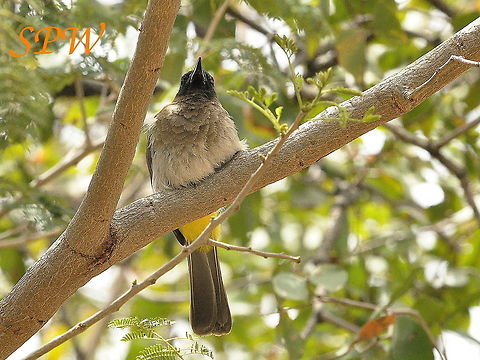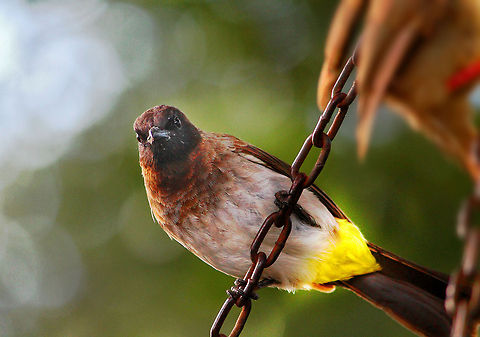
Appearance
The bill is fairly short and thin, with a slightly downcurving upper mandible. The bill, legs, and feet are black and the eye is dark brown with a dark eye-ring, which is not readily visible.The dark-capped bulbul is mostly greyish-brown above and whitish-brown below, with a distinctive dark head and pointy crest on top of the head. The back of the head merges into the brown of the back, and the chin is also blackish. The underparts are grey-brown apart from white around the vent . It is about 18 cm in length, with a long tail. It has a dark brown head and upperparts. Sexes are similar in plumage.
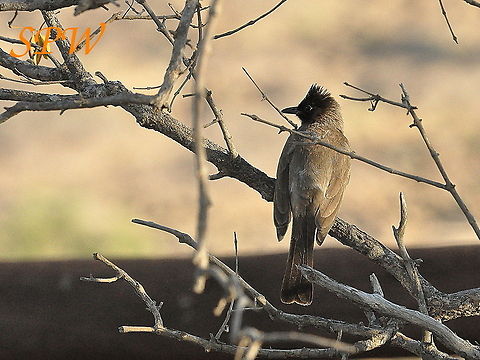
Behavior
The black-eyed bulbul is usually seen in pairs or small groups. It is a conspicuous bird, which tends to sit at the top of a bush. As with other bulbuls they are active and noisy birds. The flight is bouncing and woodpecker-like. The call is a loud ''doctor-quick doctor-quick be-quick be-quick''.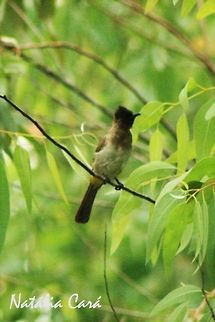
Habitat
It is a common resident breeder in much of Africa. It is found in woodland, coastal bush, forest edges, riverine bush, montane scrub, and in mixed farming habitats. It is also found in exotic thickets, gardens, and parks.This species nests throughout the year in the moist tropics, elsewhere it is a more seasonal breeder with a peak in breeding coinciding with the onset of the rainy season. The nest is fairly rigid, thick walled, and cup-shaped. It is situated inside the leafy foliage of a small tree or shrub.
Two or three eggs is a typical clutch. It, like other bulbuls, is parasitised by the Jacobin cuckoo.
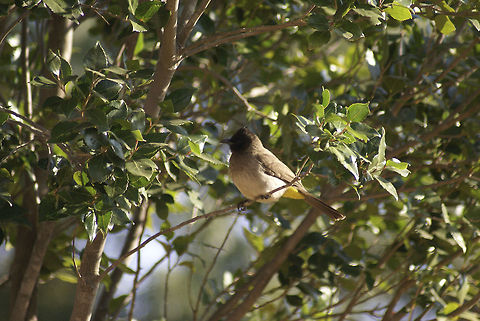
Reproduction
It is a common resident breeder in much of Africa. It is found in woodland, coastal bush, forest edges, riverine bush, montane scrub, and in mixed farming habitats. It is also found in exotic thickets, gardens, and parks.This species nests throughout the year in the moist tropics, elsewhere it is a more seasonal breeder with a peak in breeding coinciding with the onset of the rainy season. The nest is fairly rigid, thick walled, and cup-shaped. It is situated inside the leafy foliage of a small tree or shrub.
Two or three eggs is a typical clutch. It, like other bulbuls, is parasitised by the Jacobin cuckoo.
References:
Some text fragments are auto parsed from Wikipedia.
